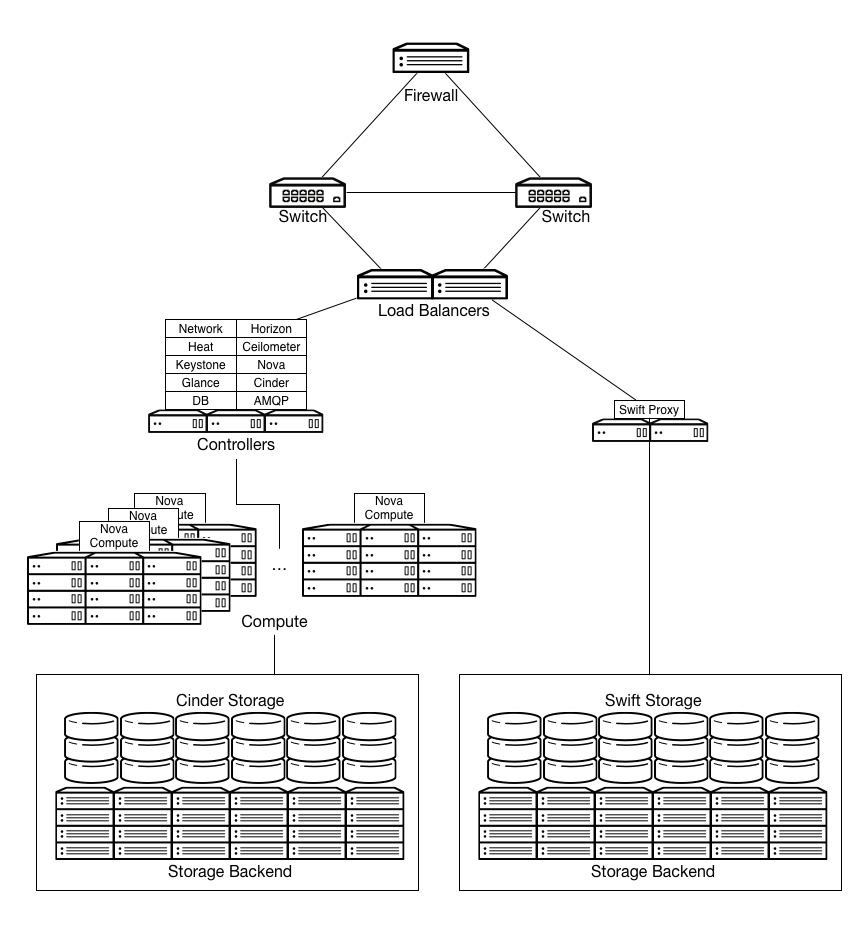- Moved RST guide to the arch-design folder - Deleted XML files - Updated scripts Change-Id: Id0e38a9cada9dd75cb9c8f3bd2d88ce2f4fd3eac Implements: blueprint archguide-mitaka-rst
3.5 KiB
Prescriptive example
An online classified advertising company wants to run web applications consisting of Tomcat, Nginx and MariaDB in a private cloud. To be able to meet policy requirements, the cloud infrastructure will run in their own data center. The company has predictable load requirements, but requires scaling to cope with nightly increases in demand. Their current environment does not have the flexibility to align with their goal of running an open source API environment. The current environment consists of the following:
- Between 120 and 140 installations of Nginx and Tomcat, each with 2 vCPUs and 4 GB of RAM
- A three-node MariaDB and Galera cluster, each with 4 vCPUs and 8 GB RAM
The company runs hardware load balancers and multiple web applications serving their websites, and orchestrates environments using combinations of scripts and Puppet. The website generates large amounts of log data daily that requires archiving.
The solution would consist of the following OpenStack components:
- A firewall, switches and load balancers on the public facing network connections.
- OpenStack Controller service running Image, Identity, Networking, combined with support services such as MariaDB and RabbitMQ, configured for high availability on at least three controller nodes.
- OpenStack Compute nodes running the KVM hypervisor.
- OpenStack Block Storage for use by compute instances, requiring persistent storage (such as databases for dynamic sites).
- OpenStack Object Storage for serving static objects (such as images).

Running up to 140 web instances and the small number of MariaDB instances requires 292 vCPUs available, as well as 584 GB RAM. On a typical 1U server using dual-socket hex-core Intel CPUs with Hyperthreading, and assuming 2:1 CPU overcommit ratio, this would require 8 OpenStack Compute nodes.
The web application instances run from local storage on each of the OpenStack Compute nodes. The web application instances are stateless, meaning that any of the instances can fail and the application will continue to function.
MariaDB server instances store their data on shared enterprise storage, such as NetApp or Solidfire devices. If a MariaDB instance fails, storage would be expected to be re-attached to another instance and rejoined to the Galera cluster.
Logs from the web application servers are shipped to OpenStack Object Storage for processing and archiving.
Additional capabilities can be realized by moving static web content to be served from OpenStack Object Storage containers, and backing the OpenStack Image service with OpenStack Object Storage.
Note
Increasing OpenStack Object Storage means network bandwidth needs to be taken into consideration. Running OpenStack Object Storage with network connections offering 10 GbE or better connectivity is advised.
Leveraging Orchestration and Telemetry services is also a potential
issue when providing auto-scaling, orchestrated web application
environments. Defining the web applications in a Heat Orchestration Template (HOT) negates the
reliance on the current scripted Puppet solution.
OpenStack Networking can be used to control hardware load balancers through the use of plug-ins and the Networking API. This allows users to control hardware load balance pools and instances as members in these pools, but their use in production environments must be carefully weighed against current stability.